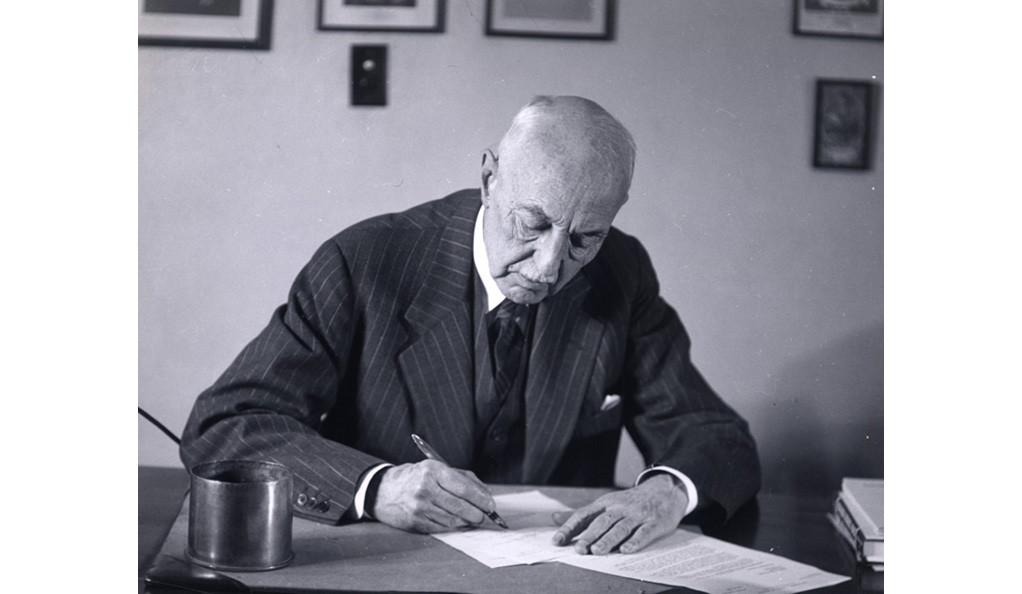EMS Role In Public Health
Published (updated: ).

In 1915 when Yale added the Department of Public Health to its medical school, such programs were rare. The University of Pennsylvania had one. Harvard and MIT had a joint School for Health Officers. Johns Hopkins was a year away from starting its School of Hygiene and Public Health. As suggested by these names, the field was still finding its identity. Yale considered naming its department “Public Health and Public Service” or “Hygiene and Philanthropy.”
The new professorship at Yale was endowed by the family of Anna M.R. Lauder. The money came with conditions. The appointee had to be a physician with experience in public health and sanitary science and also had to be willing to enter the political fray and bring about change in the state’s public health regulations. The university was wise enough to ignore the stipulation requiring a physician, instead hiring a 38-year-old bacteriologist named Charles-Edward Amory Winslow. He turned out to be an inspired choice beyond anyone’s expectations, except perhaps his own.
Public health is “the science and art of preventing disease, prolonging life, and promoting health through the organized efforts and informed choices of society, organizations, public and private communities, and individuals.” — CEA Winslow
10 Essential Public Health Services
- Assess and monitor population health status, factors that influence health, and community needs and assets
- Investigate, diagnose, and address health problems and hazards affecting the population
- Communicate effectively to inform and educate people about health, factors that influence it, and how to improve it
- Strengthen, support, and mobilize communities and partnerships to improve health
- Create, champion, and implement policies, plans, and laws that impact health
- Utilize legal and regulatory actions designed to improve and protect the public’s health
- Assure an effective system that enables equitable access to the individual services and care needed to be healthy
- Build and support a diverse and skilled public health workforce
- Improve and innovate public health functions through ongoing evaluation, research, and continuous quality improvement
- Build and maintain a strong organizational infrastructure for public health
Public Health Law
Public health law is an emerging field in U.S. public health practice. The 20th century proved the indispensability of law to public health, as demonstrated by the contribution of law to each of the century’s 10 great public health achievements. Former CDC Director Dr. William Foege has suggested that law, along with epidemiology, is an essential tool in public health practice.
Public health laws are any laws that have important consequences for the health of defined populations. They derive from federal and state constitutions; statutes, and other legislative enactments; agency rules and regulations; judicial rulings and case law; and policies of public bodies. Government agencies that apply public health laws include agencies officially designated as “public health agencies,” as well as health-care, environmental protection, education, and law enforcement agencies, among others.
Scope of Public Health Law
Law is foundational to U.S. public health practice. Laws establish and delineate the missions of public health agencies, authorize and delimit public health functions, and appropriate essential funds. The concept of public health law gained momentum early in the 20th century .
The concept of public health law has evolved into overlapping paradigms. One paradigm frames public health practice in relation to multiple sources of law (e.g., statutes and regulations) and to fields of law (e.g., constitutional and environmental law). The other, a more scholarly view, focuses on the legal powers and duties of government to ensure public health and limitations on government powers to constrain the protected liberties of individuals.
Successful Public Health Initiatives
- Widespread vaccinations
- Clean drinking water and sewage systems
- Declining infectious disease
- Fluoridated water
- Reduction in use of tobacco products
- Prenatal Care
EMS is considered to be a component of public health. Where injury and illness prevention is not typically a component of EMS operations, EMS can fulfil the need for early intervention. In many areas, EMS is the primary connection between the hospital system and the public. Some EMS agencies actively participate in primary prevention by way of vaccination and public education. The primary role for EMS is secondary prevention. Secondary prevention is the act of preventing the complications or slowing the progression of a disease.
Unbeknownst to most EMS providers, they are participating in disease surveillance. Every patient care report has the ability to be queried for patterns. The analysis of patterns is often referred to as syndromic surveillance. EMS providers are first line providers; as such provides the best source of information for analysis of data as it pertains to health and the general public. Trauma is a disease that is best prevented. Understanding how trauma happens is a goal of public health. Typical information gleaned from EMS reports in regards to trauma are:
- Car seat safety
- Seat belt usage
- Helmet usage
- Driving under the influence
- Falls
- Fire
Public Health Emergencies
In the United States, a public health emergency declaration releases resources meant to handle an actual or potential public health crisis. Recent examples include:
- Incidents of flooding
- Severe weather
- The 2009 swine flu pandemic, which Homeland Security Secretary Janet Napolitano described as a “declaration of emergency preparedness.”
- The COVID-19 pandemic
